Cibotium barometz
Cibotium barometz
1. The products in our compound library are selected from thousands of unique natural products; 2. It has the characteristics of diverse structure, diverse sources and wide coverage of activities; 3. Provide information on the activity of products from major journals, patents and research reports around the world, providing theoretical direction and research basis for further research and screening; 4. Free combination according to the type, source, target and disease of natural product; 5. The compound powder is placed in a covered tube and then discharged into a 10 x 10 cryostat; 6. Transport in ice pack or dry ice pack. Please store it at -20 °C as soon as possible after receiving the product, and use it as soon as possible after opening.
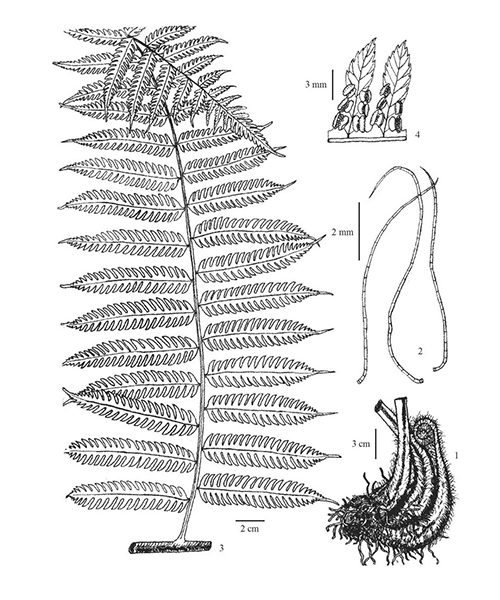
Natural products/compounds from Cibotium barometz
- Cat.No. Product Name CAS Number COA
-
BCN6214
3,4-Dihydroxybenzaldehyde139-85-5
Instructions
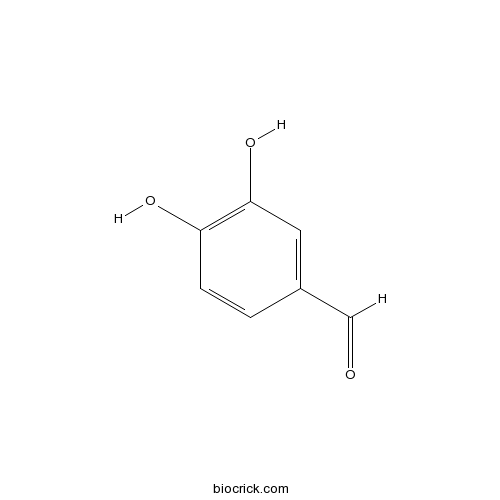
-
BCN5979
Caffeic acid331-39-5
Instructions
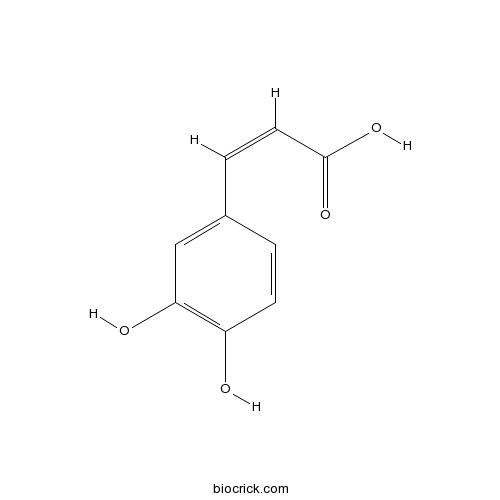
-
BCN1015
Beta-Sitosterol83-46-5
Instructions
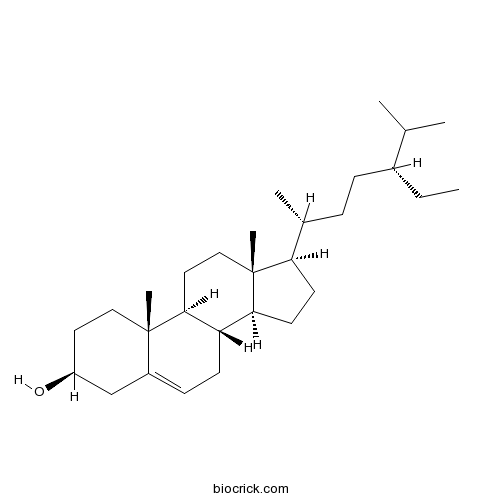
-
BCN4537
3,4-Dihydroxybenzoic acid99-50-3
Instructions
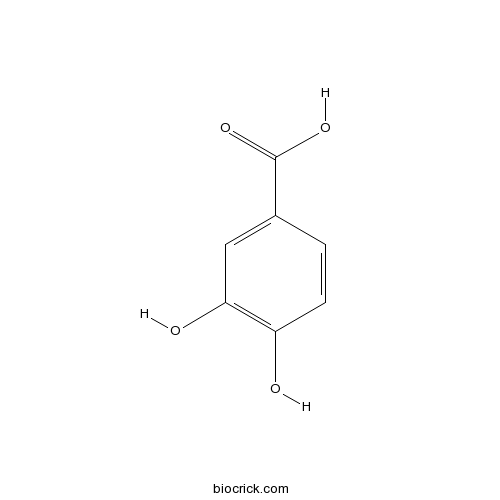
In vitro antidermatophytic activity and cytotoxicity of extracts derived from medicinal plants and marine algae.[Pubmed: 30060991]
This study was conducted to evaluate the antidermatophytic activity of 48 extracts obtained from medicinal plants (Cibotium barometz, Melastoma malabathricum, Meuhlenbeckia platyclada, Rhapis excelsa, Syzygium myrtifolium, Vernonia amygdalina) and marine algae (Caulerpa sertularioides, Kappaphycus alvarezii) against Trichophyton rubrum and Trichophyton interdigitale (ATCC reference strains), and the cytotoxicity using African monkey kidney epithelial (Vero) cells. Active plant extracts were screened for the presence of phytochemicals and tested against clinical isolates of Trichophyton tonsurans.
Cibotium barometz polysaccharides stimulate chondrocyte proliferation in vitro by promoting G1/S cell cycle transition.[Pubmed: 28358416]
Cibotium barometz polysaccharides (CBPS) are one of the most important bioactive components extracted from the Cibotium barometz plant, which belongs to the Dicksoniaceae family. It has been widely used for the treatment of orthopedic diseases in traditional Chinese medicine. However, the molecular mechanisms behind the therapeutic effects of CBPS remain to be clarified. In the present study, the concentration of CBPS was detected by phenol-vitriol colorimetry. Furthermore, the effects stimulated by CBPS on the viability and G1/S cell cycle transition in primary chondrocytes from Sprague-Dawley rats were investigated. A cell viability assay demonstrated that chondrocyte proliferation may be enhanced by CBPS in a dose‑ and time‑dependent manner. The mechanism underlying the promotion of chondrocyte cell cycle was suggested to involve the stimulation of G1 to S phase transition. To further confirm the results, reverse transcription‑quantitative polymerase chain reaction and western blot analyses were used to detect the expression of mRNA and protein levels of cyclin D1, cyclin‑dependent kinase 4 and retinoblastoma protein. The results suggested that CBPS may stimulate chondrocyte proliferation via promoting G1/S cell cycle transition. Since osteoarthritis is characterized by deficient proliferation in chondrocytes, the present study indicates that CBPS may potentially serve as a novel method for the treatment of osteoarthritis.
Hepatoprotective hemiterpene glycosides from the rhizome of Cibotium barometz (L.) J. Sm.[Pubmed: 28262248]
Five previously undescribed hemiterpene glycosides, cibotiumbarosides E-I, and two known hemiterpene glucosides, were isolated from the rhizome of Cibotium barometz (L.) J. Sm. The structures of cibotiumbarosides E-I were established by 1D and 2D NMR spectroscopic analyses and HRMS. The absolute configuration of the aglycone of cibotiumbaroside E was assigned by calculated ECD with the TDDFT method. Cibotiumbarosides F and I both exhibited remarkable hepatoprotective activity against APAP-induced acute liver damage in vitro, which were more effective than the positive control, bicyclol. On the other hand, seven hemiterpene glycosides were all inactive in assays of cytotoxicity, neuroprotection, antidiabetes and anti-inflammation.
The gastro protective effects of Cibotium barometz hair on ethanol-induced gastric ulcer in Sprague-Dawley rats.[Pubmed: 28103938]
Cibotium barometz is a medical herb used traditionally in the Malaysian peninsula for several ailments, including gastric ulcer. The aim of this study was assessment the anti-ulcer effects of C. barometz hair on ethanol-induced stomach hemorrhagic abrasions in animals. Seven groups of Sprague Dawley (SD) rats were administered 10% Tween 20 in the normal control and ulcer control groups, and omeprazole 20 mg/kg and 62.5, 125, 250, and 500 mg/kg of C. barometz hair extract in the experimental groups. After 60 min, the normal control group of rats was orally administered 10% Tween 20, while absolute ethanol was orally administered to the groups of ulcer control, omeprazole and experimental groups. Stomachs of the rats were examined macroscopically and histologically. Homogenates of stomachs were used to evaluate endogenous antioxidant enzyme activities.
Green synthesis of gold and silver nanoparticles using aqueous extract of Cibotium barometz root.[Pubmed: 27917689]
Green synthesis of gold (CB-AuNps) and silver (CB-AgNps) nanoparticles using Cibotium barometz root extract was highlighted. CB-AuNps were synthesized almost instantly and CB-AgNps were formed after 25 min in a heated aqueous extract. The formation of CB-AuNps and CB-AgNps was detected at 548 and 412 nm; they were spherical with crystallite sizes of 6 nm and 23 nm, respectively. CB-AgNps were further investigated for their antimicrobial activity against Escherichia, Staphylococcus aureus, Salmonella enterica, and Pseudomonas aeruginosa. Furthermore, scavenging activity against 1,1-diphenyl-2-picrylhydrzyl (DPPH) free radicals was demonstrated. Lastly, the cytotoxic properties of CB-AuNps and CB-AgNps were explored in murine macrophages (RAW264.7) cells and MCF-7 breast cancer cells. This study demonstrated the prospective biomedical applications of CB-AuNps and CB-AgNps as antioxidant, antimicrobial agents, and drug-delivery agents.
[Study on decoction's effect of different processed rhizomes of Cibotium barometz on retinoic acid induced male rats osteoporosis].[Pubmed: 24956841]
This study compared the decoction's HPLC figures of the different processed rhizomes of Cibotium barometz including the raw, the sand-baked, the wined, the steamed and the salted, on the basis of which, with the sand-baked Drynaria fortunei decoction as the positive control group, comparingall groups' decoction, concentration of which was 104.2 g x L(-1), for 4 weeks, by their effects (s-TRAP and total scores of OPG, Ca, P, IL-6, TNF-alpha and IL-1) on retinoic acid induced male rats osteoporosis. The experiment results showed the sand-baked and the wined were better than the steamed, the salted and the raw;in the processing methods' selection, the sand-baked was a better heating method than the steamed and the rice wine was the better excipient than the salt. It provided a reference to explain the processing principle of rhizomes of C. barometz and work mechanism of anti-osteoporosis.


